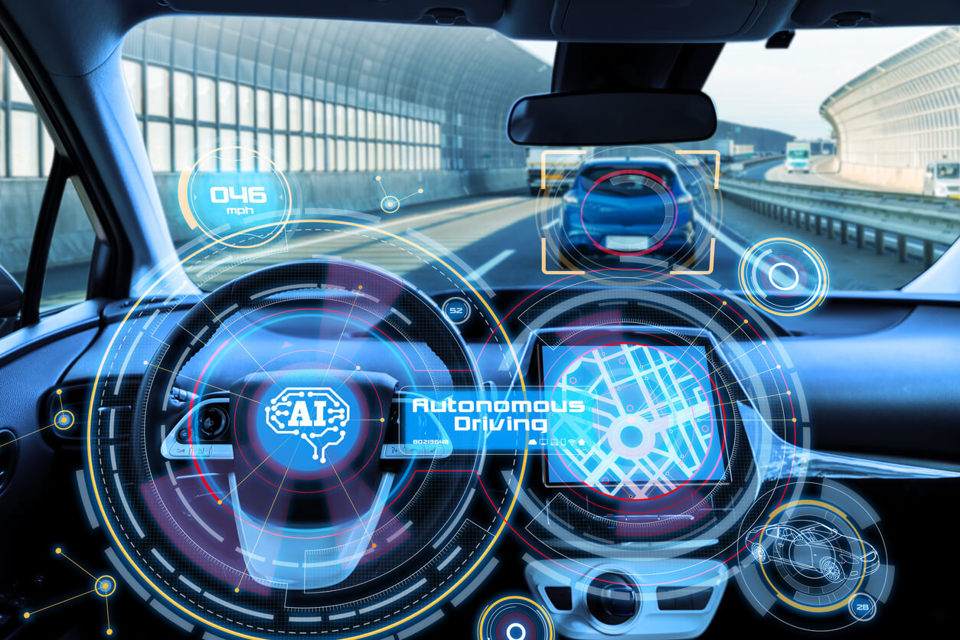A range of new vehicle safety features, to be fitted as standard on all new cars, vans, lorries and buses sold in Europe from 2022, moved a step closer this week after a provisional EU deal was reached in Strasbourg.
The new rules include requirements for new technologies, such as Automated Emergency Braking (AEB) and overridable Intelligent Speed Assistance (ISA), to be fitted as standard for the first time.
ISA uses GPS data and traffic sign recognition to locate the vehicle and the current road speed limit to prevent the driver from speeding. However, it can be overridden by accelerating hard, for overtaking manoeuvres, while the European Transport Safety Council has called for all vehicles to have a switch so ISA can be turned off during a phasing in period.
New lorries will also be required to have improved levels of ‘direct vision’, based on Transport for London’s Direct Vision Standard, to give drivers a greater chance of seeing vulnerable road users such as pedestrians and cyclists around the vehicle.
Furthermore, the legislation aims to tackle drink driving by making it easier to retrofit an alcohol interlock device – a technological solution for tackling repeat drink driving in use in a number of EU Member States.
New vehicles will also be required to be fitted with Electronic Data Recorders that store vital data on the car’s status in the moments immediately before a collision. Such information is vital to understanding why crashes occur and for preventing future collisions.
Britain is expected to follow the same rules, irrespective of Brexit.
As part of the process, researchers from TRL – the UK-based Transport Research Laboratory – conducted a cost-benefit evaluation the next generation of vehicle safety standards.
Richard Cuerden, head of TRL’s Academy, said: “The advanced safety measures for new vehicles will provide state of the art protection to all road users.
“Intelligent Speed Assistance and Drowsiness and Distraction Recognition will support drivers in their ongoing tasks. Autonomous Emergency Braking and Emergency Lane Keeping will intervene in the most critical situations to avoid a crash, and improved crash tests will ensure that injuries of occupants as well as pedestrians and cyclists are minimised in the remaining collisions.”
Negotiators from the European Parliament and European Commission agreed with representatives of EU Member State governments earlier this week on the final shape of the regulations first announced by the European Commission in May last year.
However, the negotiated deal is provisional and still subject to formal votes in the European Parliament and by EU Member States. Due to European Parliamentary elections in May – this process could still take several more months.
Commenting on the provisional deal, Antonio Avenoso, executive director of the European Transport Safety Council (ETSC), said: “There have only been a handful of moments in the last fifty years which could be described as big leaps forward for road safety in Europe. The mandatory introduction of the seat belt was one, and the first EU minimum crash safety standards, agreed in 1998 was another. If yesterday’s agreement is given the formal green light in September, it will represent another of those moments, preventing 25,000 deaths within 15 years of coming into force.”
He continued: “Although this legislation was many years in the planning stages, there has been relatively little time for political discussions over its final shape.
“We would like to pay tribute to the MEPs and representatives of the Commission and Member States that have worked tirelessly to get a deal done before the big changeover at the European Parliament and European Commission this summer. In particular the Romanian EU presidency, European Commissioners Elżbieta Bieńkowska and Violeta Bulc, and the Polish MEP Róża Thun deserve recognition for their commitment to seeing this legislation through.
Bieńkowska, responsible for Internal Market, Industry, Entrepreneurship and SMEs at the EC, also believes that the new vehicle sagety legislation will have the same kind of impact as when the safety belts were first introduced.
She concluded: “Many of the new features already exist, in particular in high-end vehicles. Now we raise the safety level across the board, and pave the way for connected and automated mobility of the future.”
Neil Greig, IAM RoadSmart director of policy and research, added: “It should be remembered that excessive speeding is a factor in 14% of fatal crashes whereas human error is present in 64%. Speed limiters have a role to play but on their own cannot eliminate all crashes.
“Advanced drivers don’t need to be reminded electronically what the speed limit is, but for others it could be a real life-saver, and help people not lose their driving licences at the same time.
“ISA as proposed for all new cars after 2022 will be overrideable so it is not the ‘big brother’ solution that some sources suggest.
“IAM RoadSmart believe the EU package of measures is important for road safety. Drivers and fleets can lead the way by specifying options such as autonomous braking tomorrow."
"Euro NCAP has tested manual speed limiters since 2009 and has long promoted their fitment to new cars," Avery said. "Many new cars have ISA as standard, such as the Ford Focus and Nissan Leaf. In 2018, manually-set ISA systems became a requirement as part of the five-star Euro NCAP rating for safety."
However, he warned that there are limitations to current ISAs.
"Speed signs can be obscured or inaccurate, while GPS mapping can be out of date. Temporary limits and road works can confuse the system, too," he said.
"There could also be a danger that drivers adapt to the system and come to over-rely on it, planting their throttle to the floor in the expectation that the car will control the speed. They will still be liable, whether they were relying on the system or not."
Avery added: "If the benefits of ISA systems are to be fully realised, consumers must be well educated to instil confidence around safe and proper usage."























John - 27/03/2019 11:28
This is good news but lets not get too excited yet. Intelligent (?) speed adaptation is over-rideable (why?), and most speed-related collisions result from excess speed for conditions, not limits - hugely different. And it will take a good number of years to filter through to the idiots that need these - as they rarely buy new cars, just much older high-performance cars. But it is a good start!